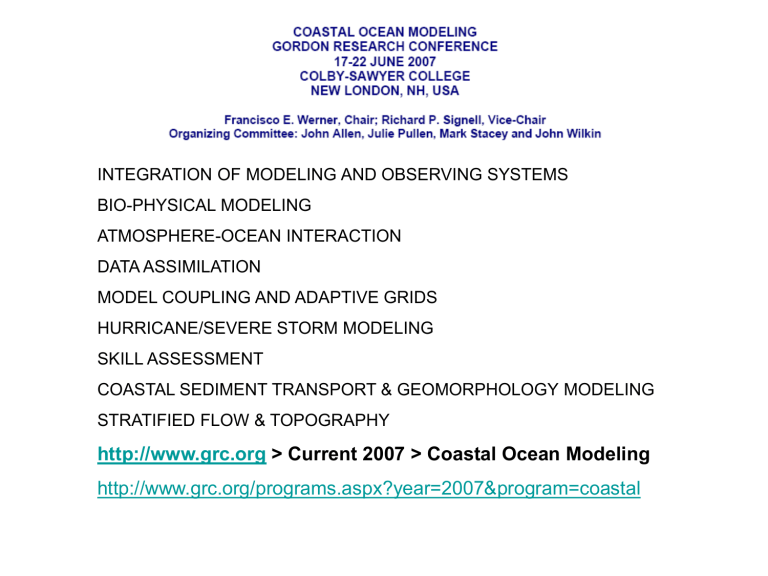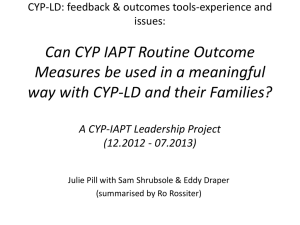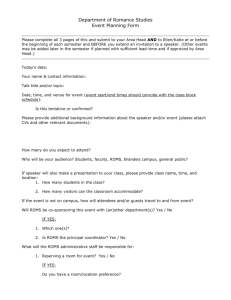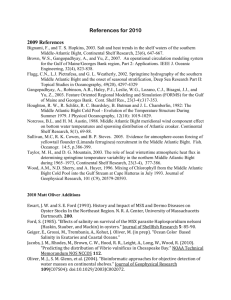(1) Wilkin - Center for Ocean

INTEGRATION OF MODELING AND OBSERVING SYSTEMS
BIO-PHYSICAL MODELING
ATMOSPHERE-OCEAN INTERACTION
DATA ASSIMILATION
MODEL COUPLING AND ADAPTIVE GRIDS
HURRICANE/SEVERE STORM MODELING
SKILL ASSESSMENT
COASTAL SEDIMENT TRANSPORT & GEOMORPHOLOGY MODELING
STRATIFIED FLOW & TOPOGRAPHY http://www.grc.org
> Current 2007 > Coastal Ocean Modeling http://www.grc.org/programs.aspx?year=2007&program=coastal
Nitrogen and carbon cycle modeling of the
Northeast North American shelf:
Nesting ROMS within HYCOM
John Wilkin
Institute of Marine and Coastal Sciences
Rutgers, The State University of New Jersey
New Brunswick, NJ, USA jwilkin@rutgers.edu
http://marine.rutgers.edu
11 th HYCOM Meeting
NRL/Stennis, April 24-26, 2007
HYCOM
(Mercator / ECCO / Climatology)
“The ocean is coordinate-system free”
– J.C. McWilliams
Circulation and biogeochemical modeling
Water column
Uptake
NO
Nitrification
NH
4
3
Mineralization
Phytoplankton
Chlorophyll
Mortality
Small detritus
Grazing
Zooplankton
Large detritus
Sediment
N
2
NH
4
Denitrification
Nitrification
NO
3
Aerobic mineralization
Organic matter
Fennel, K., et al 2006: Nitrogen cycling in the Middle Atlantic Bight: Results from a three-dimensional model and implications for the North Atlantic nitrogen budget. Glob. Biogeochem. Cyc., 20, doi:10.1029/2005GB002456.
Nitrogen cycle modeling for wide shelves
Fennel, K., et al 2006: Nitrogen cycling in the Middle Atlantic Bight: Results from a three-dimensional model and implications for the North Atlantic nitrogen budget. Glob. Biogeochem. Cyc., 20, doi:10.1029/2005GB002456.
Model-data comparisons
Model crashes in summer
(no tides)
Fennel, Wilkin,
O’Reilly
ROMS in Hycom NENA configuration
• 10 km horizontal, 30 s-levels terrain-following
• NCEP daily surface atmospheric reanalysis
– Fairall et al. 2003 bulk flux air-sea exchange parameterization
– daily shortwave modulated for diurnal cycle
– evaporation from latent heat minus NCEP precip
• embedded in Hycom North Atlantic best-estimate daily
– Hycom T,S bias w.r.t. Hydrobase annual mean is removed
– radiation/nudging to Hbase+Hycom’ T,S and u at perimeter
– 200 km linear taper nudging region 0 to 2 day -1 at perimeter
– OTPS/TPX03 tides and Flather condition with Hycom z
, u
• Monthly climatological rivers (Seitzinger)
• Mellor-Yamada 2½ vertical turbulence closure
• Start physics in June 2003
– start BGC in January 2004
– BGC boundary conditions from regressions of tracer on T,S data
Taylor diagrams for model skill assessment
Model, satellite and ecosystem algorithm comparison
Satellite-derived primary production (PP) using VGPM2
VGPM2 applied to
NENA-simulated fields
Modeled PP using NENA
Fennel, Wilkin, O’Reilly
SeaWiFS
SeaWiFS
ROMS
SeaWiFS (Aug) old PAR Aug 2004
Shallower euphotic depth gives more realistic chlorophyll distribution on Georges
Bank, the Gulf of Maine and the Slope Sea. new PAR Aug 2004
Katja Fennel
Continental shelf carbon cycle
Simulated annual air-sea flux of CO
2
Explicit inorganic carbon cycling
Positive values indicate uptake by ocean
Outer Mid-Atlantic Bight continental shelf is a sink for atmospheric CO
2
No net uptake off NJ due to outgassing during summer from upwelling
MAB atmospheric CO
2
uptake estimates
Total
( Mt C yr -1 )
Inner Shelf
(0-20 m)
( mol C m -2 yr -1 )
Mid-shelf
(20-50 m)
( mol C m -2 yr -1 )
Outer Shelf
(50-200 m)
( mol C m -2 yr -1 )
DeGrandpre et al.
(2002)
1.0 ± 0.6
Model Model w/o DNF
0.9
1.62
0.9 ± 0.63
1.6 ± 1.28
0.7 ± 0.07
0.38
0.57
0.91
1.1
1.2
1.2
Jean-Noel Druon
DOM modeling
1-D Mid Atlantic Bight results
Summary: Status/Future
• ROMS-in-HYCOM for NENA works
– but requires that the salinity bias is corrected
• increasing resolution will not solve bias
– ROMS biases:
• South Atlantic Bight bottom temperatures too cold
• shelf stratification too strong
• MAB shelf/slope front under-resolved
– ROMS/BGC:
• sensitivity to vertical mixing, k
PAR being pursued
• must consider benthic processes (semi-labile constituents, diagenesis, denitrification, export, benthic primary productivity)
• DOC model running now
*Experimental System for Predicting Shelf and Slope Optics jwilkin@rutgers.edu
http://marine.rutgers.edu
Summary: Status/Future
• Needs
– explore improved open boundary condition schemes
– better process for data transfer and coordinate remapping
(presently ad hoc extrapolation and land/sea/bathy mis-match)
• especially for future operational applications (MURI-ESPreSSO*) unbiased Hycom (on shelf) preferred
• but possibly corrected via shelf assimilation
– should use inter-annual river flow variability (in both models but especially in ROMS)
• Future
– Operational MAB
– 4DVar assimilation of Coastal Observing System data
• gliders, CODAR, cabled observatory
– Optics model for ESPreSSO
– multiple nesting within ROMS
*Experimental System for Predicting Shelf and Slope Optics jwilkin@rutgers.edu
http://marine.rutgers.edu
CODAR surface currents coastal meteorology
ROMS in HYCOM satellite SST, color,
SSH, surface velocity (MCC) glider: T,S, optics along paths







